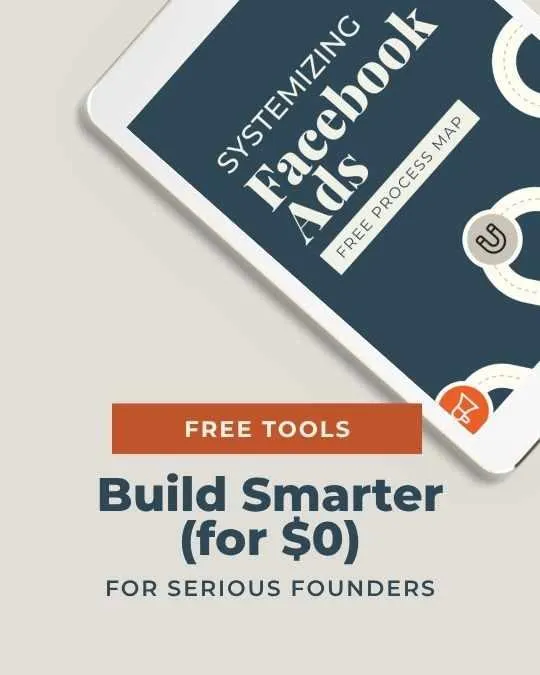How to Build a TikTok Organic Content System That Scales: The 7-Step Framework for E-commerce Founders
Growing your business on TikTok doesn't have to be a time-suck. Most founders think they need to post daily, chase trends, or be glued to their phones to see results. But what if you could build a system that delivers consistent organic growth without you at the center? You can create a scalable TikTok engine that turns your existing assets—product shots, customer testimonials, and FAQs—into high-performing content that drives both visibility and sales.
The secret isn't going viral once. It's building a repeatable process your team can execute without you. Think monthly strategy sessions, weekly content batching, and scheduled posting—all working together like clockwork. This approach isn't random; it's a proven organic content strategy that builds momentum over time.
While most brands fail at TikTok organic growth, you can join the successful 20% by focusing on systems rather than one-off posts. The TikTok community values authenticity and organic content, but that doesn't mean you can't be strategic about how you create it.
Key Takeaways
Build a scalable TikTok system using your existing assets instead of chasing trends or posting daily.
Create a monthly content strategy with weekly batching to maintain consistency without founder involvement.
Track performance with a simple scorecard to double down on what works and eliminate what doesn't.
Why Most TikToks Flop & What Actually Works
Most businesses fail on TikTok because they're playing the wrong game. They chase viral moments instead of building systems that work regardless of trends.
The Trap of Chasing Trends
Ever notice how everyone jumps on the same trending sounds? And how almost nobody gets results from them? That's because trend-chasing is a losing strategy for businesses.
When you hop on trending sounds or viral audio, you're competing with millions of others doing the exact same thing. The algorithm already has better versions of that content.
Your business isn't like others. So why would your content be?
The real gold mine? Creating content that only YOU can make. Content about your unique products, customer problems, and specific solutions.
Stop making dance videos or funny skits that have nothing to do with your products. Start making content directly tied to what you sell.
Cracking the TikTok Algorithm
The TikTok algorithm isn't magic. It's a system that measures specific engagement signals.
Here's what actually matters:
Watch time (not just views)
Rewatches (the holy grail of signals)
Engagement rate (comments, shares)
Completion rate (do people finish your videos?)
The algorithm rewards videos that hook viewers in the first 2 seconds. No slow intros. Get to the point.
Videos that create questions in viewers' minds perform better. Why? Because people watch longer to get answers.
Your goal isn't just to entertain. It's to create content so relevant to your ideal customer that they can't scroll past it.
Consistency Versus Virality
Virality is a bonus, not a strategy. 80% of businesses fail because they quit when they don't go viral.
The math is simple: If you post consistently for 90 days, you'll outperform 90% of your competition who gave up after two weeks.
Your TikTok strategy needs to be sustainable for years, not days. Build systems that don't rely on you being glued to your phone.
Success formula:
Create content pillars based on customer problems
Batch create videos monthly
Schedule and forget
Review performance weekly
A single mega-viral hit won't change your business. But 100 solid-performing videos that drive consistent traffic will.
Remember: The goal isn't to be TikTok famous. It's to convert viewers into customers.

The TikTok Engine: A Step-by-Step System for Organic Growth
Building a TikTok system isn't rocket science. It's about creating consistent content that connects with your audience without burning you out. Here's how to make it happen.
Step 1 – Choose Your 3-4 Content Pillars
Your content pillars are the backbone of your TikTok strategy. Think of them as your go-to topics that you can create videos about over and over.
Don't overthink this. What are 3-4 things your customers always ask about? What problems do you solve? That's your answer.
For example, if you sell skincare:
Pillar 1: Product ingredients and benefits
Pillar 2: Customer before/after results
Pillar 3: Common skincare myths
Pillar 4: Quick skincare routines
The best pillars connect directly to what you sell. If your content doesn't eventually lead someone to think "I need that product," you're wasting time.
Test each pillar with 3-5 videos before going all-in. The platform will tell you what works.
Step 2 – Source Raw Content From What You Already Have
You're sitting on a goldmine of content right now. You just don't see it yet.
Content you already have:
Customer reviews and testimonials
Product photos and videos
FAQs from your website
Customer service emails
Your own product knowledge
Set up a simple system: create a shared folder where team members drop screenshots of customer comments, questions, and wins.
This isn't about creating new stuff. It's about recycling what's already working.
Every customer question is a potential video. Every product feature is content waiting to happen. Every testimonial is social proof gold.
The key is organizing this raw material so it's ready when you batch videos.
Step 3 – Batch Short-Form Video with Lightweight Templates
Batching is the secret to not letting TikTok consume your life. Don't make one video at a time. Make 10-20 in one sitting.
Create 2-3 simple video templates that you can repeat over and over:
Standing talking to camera with text overlay
Product demo with voiceover
Screen recording with commentary
Keep it simple. The fancier you try to get, the less you'll actually post.
Your phone camera is enough. Good lighting and clear audio matter more than expensive equipment.
Batch once or twice a month. Set aside 2-3 hours, pull out your content sources from Step 2, and knock out as many videos as possible following your template formats.
Remember: Consistency beats perfection every time.
Step 4 – Schedule Posts & Build a Team-Run Workflow
The magic happens when you remove yourself from the daily posting grind.
Use a scheduling tool like Metricool to queue up your batched content. Aim for 3-4 posts per week, not daily.
Your ideal workflow:
You batch create videos monthly
Team member uploads and schedules them weekly
System runs without you checking daily
Document your process step-by-step so anyone could run it. This might include:
How to upload videos to TikTok
What hashtags to use
Best posting times for your audience
How to write captions
Your goal: build a system so solid you could go on vacation for two weeks and videos would still go out.
Step 5 – Daily Engagement System (Run by VA or Social Assistant)
Posting videos is only half the battle. Engagement is where the TikTok organic growth happens.
Assign a team member to spend 20-30 minutes daily on engagement:
Responding to all comments on your videos
Engaging with 10-15 accounts in your niche
Finding and saving trending sounds
Reporting any engagement opportunities to you
Give them clear guidelines:
Voice tone examples
FAQs and standard responses
What questions to escalate to you
This daily engagement signals to TikTok that you're an active account. The algorithm rewards consistency.
Your videos perform better when you're engaging with others. It's not optional.
Step 6 – Monthly Review: Metrics That Matter
Most people track vanity metrics. You're going to track what actually matters.
At the end of each month, review:
Watch time (not just views)
Conversion rate to website clicks
Content pillars performance
New followers from each video type
Don't chase virality. Chase sustainable organic growth that builds over time.
Create a simple one-page report showing:
Top 3 performing videos and why they worked
Bottom 3 videos and what to avoid
Adjustments to make next month
This isn't about numbers. It's about learning what resonates with your audience and doubling down on it.
The winners will show you what to make more of. The losers will show you what to cut.
Systemize Success with a Content Scorecard & SOPs
Want to know why most TikTok strategies fail? No system. Let's fix that.
Create a simple content scorecard to track what works. This isn't fancy - just a spreadsheet that tracks which videos perform best.
Your scorecard should measure:
Views (first 24 hours)
Engagement rate (likes + comments + shares divided by views)
Click-through to your store
Conversions from each post
When a video hits your targets, mark it as a winner. Using a tailored content scoring process helps you make posts your audience actually loves.
Now for the magic: Standard Operating Procedures (SOPs).
Document exactly how you:
Find content ideas from customer questions
Set up your filming space
Script your videos
Edit in your brand style
Write captions that convert
SOPs turn random success into repeatable results. They're how you go from "that video went viral by accident" to "we know exactly why this works."
Remember - high resolution videos get 5.4% more impressions. Put that in your SOP.
The goal? Anyone on your team can create TikToks that look and feel like your best stuff.
This system gets better over time. Each month, update your scorecard and SOPs based on what's working.
Your TikTok strategy isn't about posting more. It's about posting smarter with systems that scale.
From Founder-Dependent to Founder-Free
The ultimate goal of building a TikTok content system isn’t just better reach or engagement—it’s freedom.
Most founders get stuck in the loop of creating content themselves because no one else “gets it.” But when you build SOPs and process maps, you're no longer the bottleneck. You’re the architect, not the operator.
Creating a content engine means your team can execute without constant approvals, back-and-forths, or creative hand-holding. That’s how you scale. That’s how you get your time back.
The TikTok algorithm may be unpredictable—but your business shouldn’t be. Systems bring predictability. SOPs bring clarity. And documented workflows create the breathing room every founder needs to actually lead.
Schedule a call with our team, we’ll help you build a system that runs TikTok without you.







